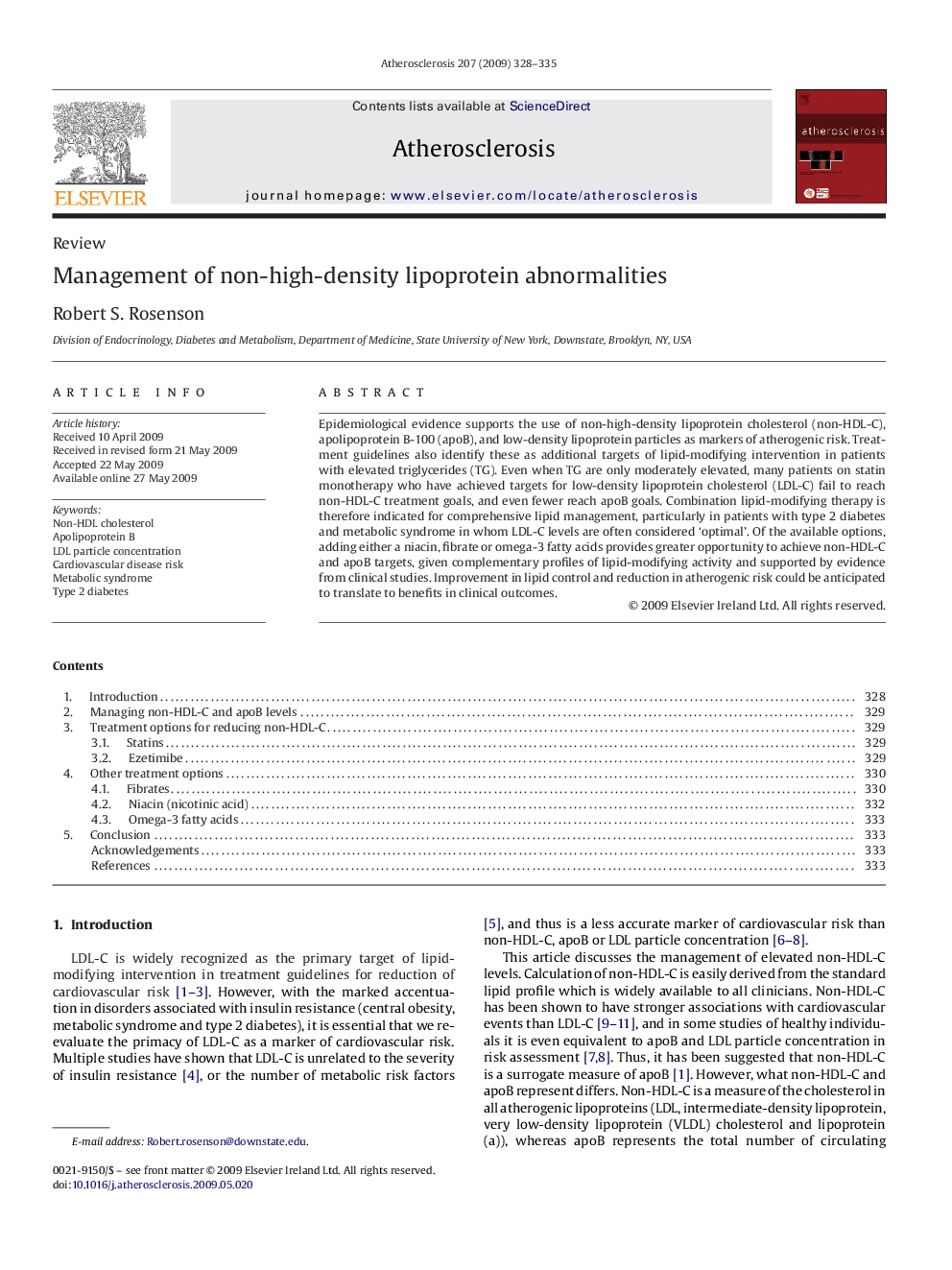| Article ID | Journal | Published Year | Pages | File Type |
|---|---|---|---|---|
| 2893351 | Atherosclerosis | 2009 | 8 Pages |
Epidemiological evidence supports the use of non-high-density lipoprotein cholesterol (non-HDL-C), apolipoprotein B-100 (apoB), and low-density lipoprotein particles as markers of atherogenic risk. Treatment guidelines also identify these as additional targets of lipid-modifying intervention in patients with elevated triglycerides (TG). Even when TG are only moderately elevated, many patients on statin monotherapy who have achieved targets for low-density lipoprotein cholesterol (LDL-C) fail to reach non-HDL-C treatment goals, and even fewer reach apoB goals. Combination lipid-modifying therapy is therefore indicated for comprehensive lipid management, particularly in patients with type 2 diabetes and metabolic syndrome in whom LDL-C levels are often considered ‘optimal’. Of the available options, adding either a niacin, fibrate or omega-3 fatty acids provides greater opportunity to achieve non-HDL-C and apoB targets, given complementary profiles of lipid-modifying activity and supported by evidence from clinical studies. Improvement in lipid control and reduction in atherogenic risk could be anticipated to translate to benefits in clinical outcomes.
